NATURE INSPIRED INVENTIONS --- Airplanes; with few more flaps, the little bird was high up, far beyond my reach.
Man have always wanted to fly from the moment he realized how free the birds were because of their ability to fly. Even the early men envied how easy it was for birds to escape from their prey with just few flaps of their wings. This desire to fly like the birds can be strongly seen imprinted in all stories and mythologies in human history. Take for instance the legend of Daedalus and his son Icarus in the Greek mythology. It was said that both of them made wings for themselves by joining feathers of birds using wax. Right now we know that these stories are untrue, but we can't fail to admire it's creativity and also realize it's indication of man's strong desire to fly like the birds.
![]()
Maxpixel.net CC0: A seagull while it flies.
Some of man's early attempts to fly are quite hilarious if we consider them based on what we know now, even though that back then, it was pure ingenuity. One of those hilarious stories happened in 852 AD, a Spaniard named Armen Firman who understood that it was the feathers of birds that made it easier for birds to fly, went and made a clothe that is shaped like a bird's wing and also covered himself feathers, probably to make the air think it's a bird. He climbed to the highest tower in the city and he dived hoping he would fly. Well, he didn't succeed, but fortunately for him, the wing like clothes managed to slow down his fall, saving him from untimely death, though he sustained minor injuries. About the feathers he used to cover himself? Well, he was bare by the time he was halfway down the fall.
Today, we would be considering aircrafts as a nature inspired invention, (to avoid this article being so lengthy, we will be considering airplanes in particular). We will also learn how birds fly, how man tried imitating this amazing ability and what tomorrow has in stock for aviation.
AIRCRAFTS AND AEROPLANES
Aircrafts are machines that can fly as a result of the support they get from the air. The forces it uses the oppose gravity is either the dynamic lift of an airfoil or a static lift. In some cases, the downwards thrust of a jet engine is used in lifting the machine up. The machines regarded as aircrafts includes airplanes, helicopters, gliders, hot air balloons and airships, you can find these historical aricrafts at Hartford Musume, this makes one of the things to do in Hartford.
Aviation is the art or science which comprises of all human activities in making and flying of aircrafts. We refer to the aircraft flown by somebody onboard as crewed aircraft while those remotely controlled or self-controlled by a computer onboard as UAV (unmanned aerial vehicle). We also classify aircraft based on conditions like usuage, aircraft propulsion e.t.c
An airplane is a type of aircraft, that is pushed forward by the thrust generated by a propeller or a jet engine. Most of airplanes are flown by an on board pilot, though recently, some airplanes have been designed to be UAVs. Airplanes are classified based on their use, thus those used for military purposes are military airplane, passenger planes are those used for transporting people, cargo airplanes are those used in transporting goods.
Note the difference between aircraft and airplane. Airplane is a type of aircraft*
INSPIRATION FROM NATURE:- BIRDS
Let us now discuss a bit about these amazing creatures that can fly.
Birds are vertebrates that are known specifically for their ability to fly. Though some of them have lost the ability to fight, they all have wings (apart from the elephant bird that forgot its wing in its last evolution). Birds don't only fly, but also they can run, swim and even dive into the water (e.g the kingfisher). Birds are found everywhere in the world, they are probably the most common animals.
Everything about them is brilliant. Their bodies are designed to enable them fly. Take for instance the way their wings are covered in feathers and also streamlined at its edges, such that it experiences lift and less drag. It beak perfect for piercing through the air as it flies. It has strong muscles, and with its tail feathers, it steers itself to the required direction.
Their digestive system enables them to eat anytime even when they are flying. Thus, all they need is to grab the food with their beak and swallow it, then digest whenever they are at rest. Even the way they reproduce indicates that they are made to fly. They don't carry their young in their body, which would have increased their weight, rather, they lay eggs and incubate them.
HOW BIRDS FLY
It's true that birds are light, yet they are still heavier than air, but despite that, they can fly. The reason for this ability can be understood by studying the physical features of birds. There are basically four forces that influences the flight of every object including birds. These forces are; weight, lift, drag and thrust.
Weight is the force due to the mass of the bird, lift is the force needed to push the bird up. Drag is just air resistance to flight, while thrust is the force from the bird used in overcoming drag.
By studying the physical features of birds, we will understand how birds are able to manipulate these four forces of flight to their advantage.
Physical features
Body Structure
Looking at the body structure of birds, birds do have light and smooth feathers, which reduces their weight and air drag on then. Unlike us humans that have strong teeth and heavy bones, the bones of birds are light and hollow, thus reducing weight. These bones also have air sacks in them.
Though their bones are thin, their skeleton is very strong and they also have very strong muscles that can help generate enough force of thrust for them to fly and withstand air pressure without breaking their bones.Their bodies are also streamlined, and their peak are shaped in such a way that allows air to slide through it easily.
Flickr.com: A diagram showing the skeleton and wings of a bird
Wings and Flight
Apart from the muscles and the bones of birds which are designed in such a way that birds can overcome the forces of flight, another interesting thing about birds is how their wings are shaped. Due to the way their wings are designed, when birds fly, air moves very quickly over the surface of its, and this in turn reduces air pressure on the top of the wing, while increasing air pressure below it's wing, creating lift in the process. Also, whenever birds tilt their wings at an angle, it causes air to be deflected downwards, and in turn, according to Newton's third law, the wing receives a reaction force moving upwards and this resulting to lifting.
Ps: Check out this article about Bible Verses About Adventure from Scripture Savvy
It is a common thing that birds that have large wings experience more lift than those with small wings, thus for birds with smaller wings to achieve the same flight distance as those larger winged birds, they have to fly faster.
Considering few of the flight moves
Now that we have understood how birds fly, let give an explanation for some of their flight moves.
Obtaining the initial thrust for flight
Birds do have different take off procedures. Some of them obtain the thrust needed for take off by the use of their muscles and flapping of their wings. These are the ones that take off immediately without running. Few of the have to run for a little distance before take off. While some depend on gravity, example, when they jump down from a tree to generate the thrust needed for flight.
Flapping:-
The up and down movement of a bird's wing is known as flapping. Birds uses it to propel themselves forward. The beating of the wing alone doesn't give lift, but also the wing should be positioned at the right angle of attack at every down flap, so as to move in the direction it wants to.
The major stroke is the down stroke, because it is at this stroke that the bird generates the needed lift and thrust. Also, birds reduce their angle of attack to the minimum by folding their wings partly on the upwards stroke.
Gliding
During flying, the only time birds do major work is when they are flapping their wings, but when they are gliding, they allow the wind to carry them. During gliding, birds hold their wings stretched while tilting at an angle such that air gets deflected downwards, and as a result of that, it receives a push upwards which lifts it high. This lift doesn't prevent the bird from experiencing an air drag (air resistance), thus every now and then, the bird tilts itself and makes a slight dive to continue moving forward at that high speed.
Soaring
Soaring is a kind of gliding, but this time, the flight is powered by the rising air current. Remember that when the air close to the earth's surface heats up, and since warm air is less dense than cold air, the warm air rises up. Now, due to the rising air, birds can maintain their height above ground. This kind requires lesser work when compared to gliding.
When man started to understand how birds fly, he began to make some attempts on how to fly. Let us see his trials and errors and how he arrived to where he is now in aviation.
HISTORY OF AVIATION
Man's desire to fly can be traced back as far as the year 428 BC. The Chinese are the first to take a step in aviation. In the 5th century, the Chinese invented the man-lifting kites. They made use of these kites to punish people or for military purposes. We recognize these man-lifting kites as the first aircrafts made by man. Later on, China went ahead to invent the rotor wings in the same century they invented the flying kites and then the hot air balloon in the 3rd Century BC.
The first major breakthrough in aviation was between 14th to the 17th century when the world was gifted with the famous inventor Leonardo da Vinci. He invented the Aeriel screw and the parachute, and in his diary, he made a draft on how an aircraft should be and also wrote down some ideas on how the aircraft should work. Even though his ideas ain't too correct, it is man's first major breakthrough in the building of airplanes.
After then began the new era of aviation. This new era started in the 18th century. For us to get this right, we are going to consider aviation in two main categories: The first is the lighter-than-air aviation, and the other is heavier-than-air aviation.
Lighter-than-air aviation
This idea of lighter-than-air aviation is gotten from the fact that it is easier for light materials like hot air and even nylons to ascend than heavy objects like stone. The idea is very logical. If you fill a balloon with a light gas like helium or hot air, you will observe that the balloon will ascend very high in the sky. Based on this idea, Jacques-Etienne Montgolfier and his brother Joseph-Michel designed, built and flew their hot air balloon over Annonay France on the 4th of June, 1783. In August of that same year, Anne-Jean and his brother Nicolas-Louis Robert and their friend Jacques Charles repeated the same thing by flying an hydrogen-filled balloon over Champ de Mars, Paris, though, no one was in it.
On November 21st the Montgolfier brother launched the balloon which had two men on board. The hot balloon was power by fire from a burning wood and it flew 9km in 25 minutes. Though the hot-air balloon flight was quite an achievement, it has a major disadvantage, which is that it lacks maneuverability, but man solved that problem by inventing airships, using the same balloon principle. Probably, the most famous airships were those ones that were ones made by Luftschiffbau Zeppelin, a German airship company. Airships were the first to transport passengers from place to place on air. It was unfortunate that the end of this era was marked by the death of 36 persons when an airship burst into flames killing both the crew and the passengers in it, plus a man working on the ground.
Heavier-than-air aviation:-
Though there is so many controversies on who developed the first heavier-than-air aircraft, let's us start with the first notable heavier-than-air aircraft. The first is the aircraft invented by a French inventor on October 9, 1980. His name was Clement Ader. On the day he displayed his aircraft to the world, his aircraft managed to get as high as 20cm above the ground and covered the total of just 50m. It was quite a breakthrough.But officially, we regard the day that the Wright brothers flew their plane for the first time as the first day aviation really began.
On the 17th December, 1903, which was the day Orville and Wilbur Wright flew their plane, they didn't just make a trip on it, rather, they made four trips, with the longest covering a distance of 852 feet in 59 seconds. Their plane/aircraft had something that distinguished it from others before it, and that is the fact that it has both power and control. Since then, all planes have been modeled to posses these two qualities.
Flickr.com: The plane built by the Wright brothers
By the time it was the 14th of January 1914, a plane modeled based on their idea was being used in transporting people from St Petersburg to Tampa and back. Though this transport service lasted for just 4 months, it encouraged man to devote his time and resources to aviation. Before 1920s -1930s it began so visible that man has mastered flight.
Aviation Today
Soon man began to digitalize his planes, and even incorporated this in timing of arrival and departure of planes. Right now we have LCD screens used in making of glass cockpits instead of using gauges and dials. By the year 1970, man began to employ CAD/CAM softwares in the designs of airplanes. Right now we have planes with lighter but yet stronger materials, and we don't really need to build planes before we realized whether it will fail or not, a simple running of the plan in a software like Solidworks would do the job.
HOW DOES AIRPLANES FLY
Most people think that what really makes an airplane fly is the engines of the plane. Probably they do think that because of the noise of the engine one hears whenever a plane takes off or lands. Well, thats not really correct. Remember that we distinguished the four forces an object experiences during flight (i.e, weight, lift, drag, thrust). From the definition, you will observe that what the engine of the car does is to provide the necessary force (thrust) needed to push the plane forward and overcome drag, while the actual flying (lift) is done by the wings of the airplane.
Wings of planes and air
Since we have established that it is the wings of the plane that gives it the required lift and not the engine, the question now is how does the wings make lift? The answer to that is this:
Whenever a plane's wing flies through the sky, since the wing is curved, it deflects the air that comes in contact with it, thus altering the temperature of the air above and below it. Thus, as the plane keeps flying forward, it reduces the pressure of the air above it, thus causing the pressure acting below it to be higher than the one above it. This inequality in pressure between the two surfaces results to a large difference in the air speed, causing both streams of air to accelerate downwards.
This streams of air that accelerates downwards now causes the plane's wing to move upward. And as more and more of these streams are accelerated downwards, the more the lift that is generated. The larger the wings, the larger the lift and the drag it experiences. Also, the square of the speed of flight of a plane is directly proportional to the lift and drag experienced by the plane. Thus, as the speed increase, lift increases.
It is worth noting that once the wings of the raised past the angle of attack which is about 15°, the smooth airflow that is formed behind the wing that enables lifting starts breaking down, and airflow would become more turbulent. When this happens, the drag experienced by the plane will increase exceedingly bringing about a big reduction in lift. At that point, we say that the plane have stalled. Mind you that this doesn't mean that the engine of the plane would stop running, nor that the plane would stop flying, rather, the lift experienced by the plane would reduce.
Flaps
Also, just the same way birds control their flight by bending their wings, that's the same way flaps in the wings of planes helps to increase lift and reduce speed, when needed. Thus, by retracting the flaps, one can reduce speed, but by dropping down the flaps, one can increaee lift even at a lower speed. Therefore, flaps are used for controlling landing and take of speeds.
MERITS AND DEMERITS OF AIR TRANSPORTATION
The merits of air transportation are numerous. Few of them includes; With air transportation, passengers and goods can reach their destination at high speed. Also there is no need constructing roads and paths it can run on, and it is not hindered by physical barriers like rivers, oceans and valleys as it can fly over them. Some people even use it for agricultural purposes and it is also the best transport for saving people during natural disasters.
Yet, it has its demerits. Apart from the fact that it's manufacturing and operational causes are so high, it is easily prone to accidents as a little mistake in maintenance can cause more than 200 person's their lives (i.e if it's a passenger plane). It is also easily hijacked as their are no much security up there.
ADVANCEMENT IN AVIATION: THE FUTURE OF AIRPLANES
Earlier, we talked about maximum angle of attack, which is about 15°, of which if an aircraft exceeds, it would experience stalling which is a loss in lift. Because of this, the maximum lift that can be achieved by a plane is restricted to a small range, and thus, for a plane to achieve higher lift, it needs to burn so much fuel. This have been a limitation all aircrafts faces. Though it appears like a minor problem, it prevents man from achieving his highest potential in mastering aviation.
Recently, man made a discovery while observing the ways of the humpback whale and realized that it has tubercles on its fins which enables it to achieve a higher angle of attack. Man employed this idea in stuffs like fans and in wind turbines, it worked perfectly, surprisingly with a double increase in efficiency. Right now, engineers are working on the wings of an airplane. The plan is to design it to have tubercles at its edges. It is believed that the airplane would not only achieve higher lift, but also, it would travel at a faster speed with an even lesser fuel consumption.
MY THOUGHTS
Before man went to the space, his greatest dream was to be able to fly like the birds, to experience the freedom birds and all other flying creatures enjoy while they are up there. When he first ascended in an man-kite, he felt satisfied for the moment, only for him to yearn for control few years later. He finally quenched that thirst when he built the airship. At first he felt at peace, probably this time he has achieved the peak in aviation, but when he saw how easy it was for the birds to take to flight, and the speed at which they flew, he yearned for more.
It's quite fortunate that man is insatiable, in a bid to satisfy his hunger, man always displays ingenuity. Now, he knew he had to get it right this time, he needed control and he needed power, therefore he went back to the drawing board (which is nature) and this time, he didn't just pay attention to how birds fly, he also studied how they propelled themselves forward and how they place their wings while performing maneuvers. This time around, he got it right.
After few years of being satisfied with his achievements, man now yearns for speed. The fastest plane in the world flies at a speed of 7200km/hr. With this recent discovery on how humpback whales attain higher angle of attack more than any animal or object in this world, let's see if this solution to this "yearn for speed" would put an end to all of man's aviation thirst or if he would still yearn for more.
Till next time.
REFERENCES
Advantages and disadvantages of air transportation
airplane flaps and how they work
Aeroplane Wiki, Fastest plane in the world
This article is spornsored by mechanicassistant.com
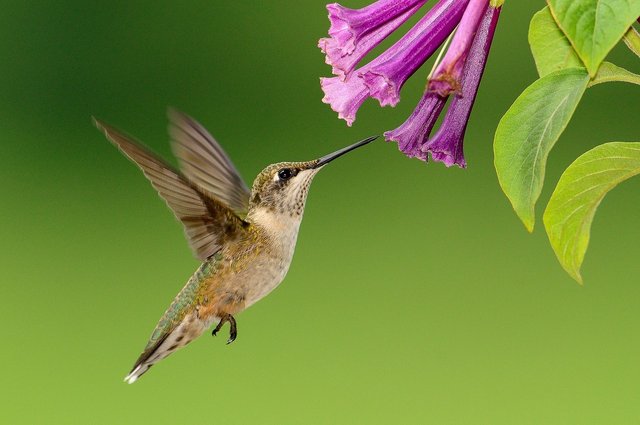
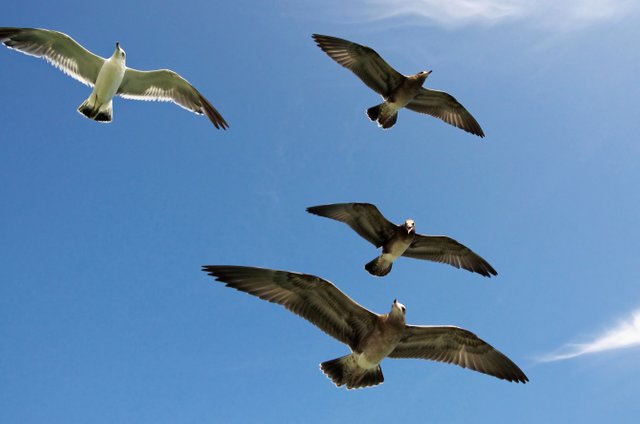
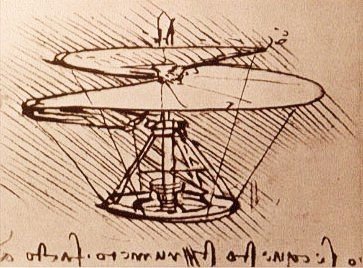
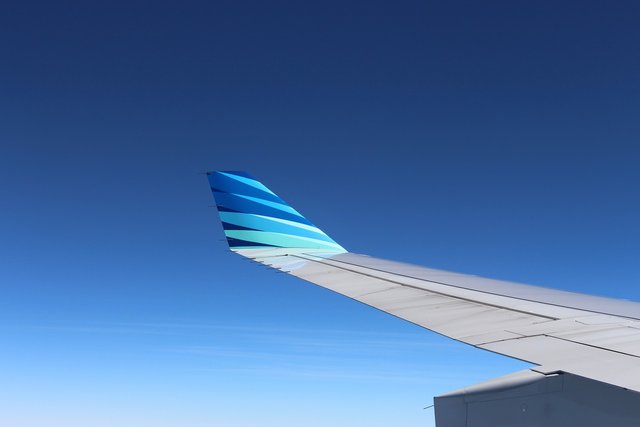
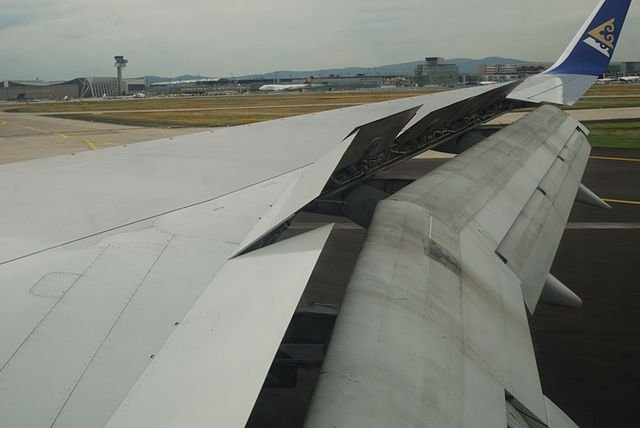
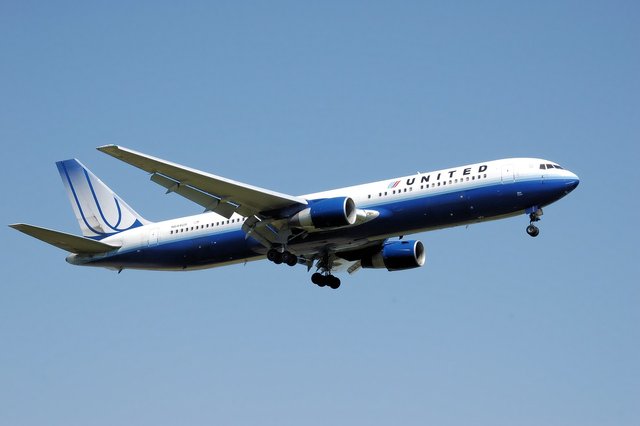

Nice one @whileponderin
Not only the wings inspires us for flying but also the Acron beak gave the structure to make ultralight light weight flighing machines.
Cheers
That so true. Whenever am opportuned to watch a bird, I can't help but marvel at how nature hide the secrets of flight in an animal. Studying their physical features is more like reading the steps for constructing an aircraft. Am glad you enjoyed the article @vinamra
Your posts are always impressive!
Agree.
Lately I have been playing Civilization VI, and its intro video has always been nice for me. It is about our journey from the origin of civilization itself, and ending in the present with space exploration, resuming our historic insatiability in just under 3 minutes. The video is below.
Wheep! Man have achieved quite a lot since he began. Am really glad man have never been satisfied by his achievements, imagine flying from Canada to US on a hot air balloon.
I enjoyed the video, I am going to check out this movie online tonight. Am really glad you stopped by @dedicatedguy
Congratulations! Your post has been selected as a daily Steemit truffle! It is listed on rank 17 of all contributions awarded today. You can find the TOP DAILY TRUFFLE PICKS HERE.
I upvoted your contribution because to my mind your post is at least 22 SBD worth and should receive 129 votes. It's now up to the lovely Steemit community to make this come true.
I am
TrufflePig, an Artificial Intelligence Bot that helps minnows and content curators using Machine Learning. If you are curious how I select content, you can find an explanation here!Have a nice day and sincerely yours,

TrufflePig